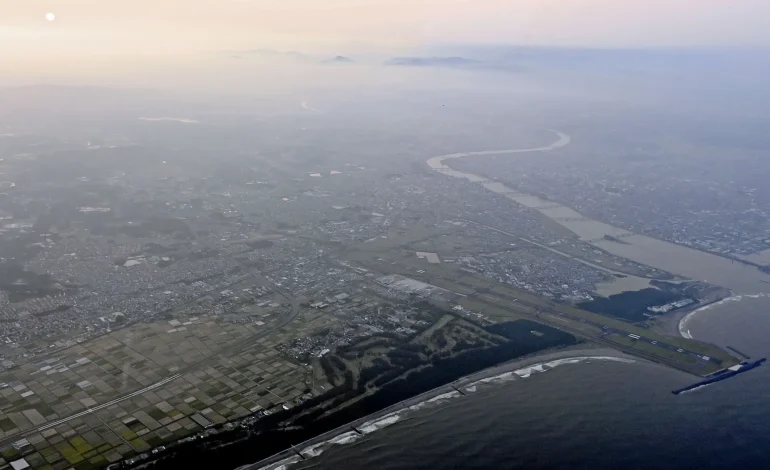A devastating megaquake off the coast of southern Japan could result in nearly 300,000 deaths, according to a new model released by the Japanese government, highlighting the nation’s vulnerability to seismic activity, as per Bloomberg.
The Cabinet Office panel’s report, released Monday, paints a grim picture of the potential destruction from a massive earthquake originating in the Nankai Trough, a seismically active zone where the Philippine Sea plate subducts under the Eurasian continental plate. The report estimates that in a worst-case scenario, a magnitude-9 quake would destroy 2.34 million buildings and claim the lives of 298,000 people.
Government estimates released in January suggest an 80% probability of such a quake occurring within the next 30 years, underscoring the urgency of preparedness measures. The Cabinet Office’s model assumes the earthquake will originate in the sea between Shizuoka prefecture and Miyazaki prefecture, triggering tsunami waves reaching up to 96 feet.
While the new maximum death toll is slightly lower than the 323,000 projected by the government in 2012 and 2013, the report attributes this reduction to improved disaster prevention measures, including building reinforcement and the construction of protective sea walls.
Japan is one of the most earthquake-prone countries globally. The devastating magnitude-9 quake that struck off the coast of Fukushima in March 2011 resulted in the deaths of over 15,000 people, according to government statistics, serving as a stark reminder of the nation’s vulnerability.
Last year, the government issued an unprecedented warning regarding an elevated risk of a megaquake around the Nankai Trough. This first-of-its-kind alert was triggered by a smaller earthquake off Kyushu, prompting immediate precautionary measures. Rail operators reduced train speeds, and some factories temporarily suspended production. The warning was ultimately lifted after approximately one week.
The new model underscores the ongoing efforts to mitigate the potential impact of a future megaquake, but also highlights the daunting challenges faced by Japan in protecting its population and infrastructure from these inevitable natural disasters. The government’s report is expected to further fuel discussions on disaster preparedness and resilience across the nation.










The latest news in your social feeds
Subscribe to our social media platforms to stay tuned